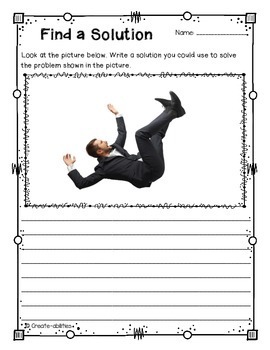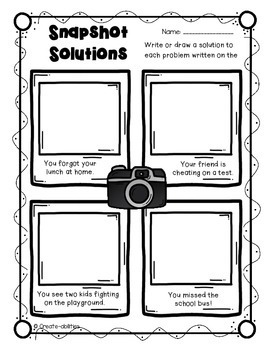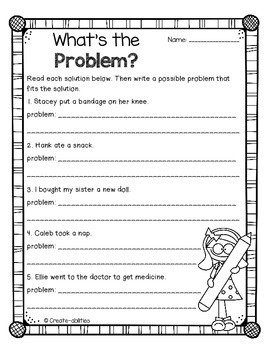Create-Abilities
46.9k Followers
Grade Levels
3rd - 5th
Subjects
Resource Type
Standards
CCSSRL.2.5
CCSSRL.3.5
CCSSRL.4.5
CCSSRL.5.5
CCSSRI.2.5
Formats Included
- PDF
Pages
24 pages
Create-Abilities
46.9k Followers
Also included in
- Text structures can be a hard concept to teach. This pack gives you 191 pages of graphic organizers, reading passages, task cards, posters, printables, and more! These pages will help your students learn about the five main text structures.Covers the 5 Types of Nonfiction Text Structures•compare andPrice $16.50Original Price $20.50Save $4.00
Description
This pack will help you clearly teach your students the core concept of problem and solution. There are posters, graphic organizers, printables, and real-life pictures to help reach every student in your classroom.
Included in this download:
• problem and solution posters
• problem and solution signal words
• problem and solution graphic organizers
• problem and solution picture prompts
• Snapshot Solutions
• What's the Problem?
• What's the Solution?
and more!
Enjoy!
★★★★You Might Also Like★★★★
Enjoy!
Total Pages
24 pages
Answer Key
N/A
Teaching Duration
N/A
Report this resource to TPT
Reported resources will be reviewed by our team. Report this resource to let us know if this resource violates TPT’s content guidelines.
Standards
to see state-specific standards (only available in the US).
CCSSRL.2.5
Describe the overall structure of a story, including describing how the beginning introduces the story and the ending concludes the action.
CCSSRL.3.5
Refer to parts of stories, dramas, and poems when writing or speaking about a text, using terms such as chapter, scene, and stanza; describe how each successive part builds on earlier sections.
CCSSRL.4.5
Explain major differences between poems, drama, and prose, and refer to the structural elements of poems (e.g., verse, rhythm, meter) and drama (e.g., casts of characters, settings, descriptions, dialogue, stage directions) when writing or speaking about a text.
CCSSRL.5.5
Explain how a series of chapters, scenes, or stanzas fits together to provide the overall structure of a particular story, drama, or poem.
CCSSRI.2.5
Know and use various text features (e.g., captions, bold print, subheadings, glossaries, indexes, electronic menus, icons) to locate key facts or information in a text efficiently.






